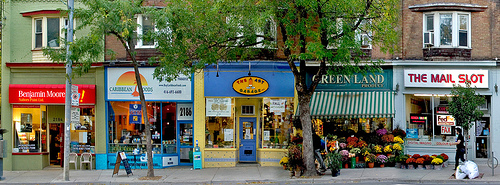
I remember hearing that when designing a park, the best way to determine the ideal location for the walkways and trails is to place a group of people in the area, observe the walking routes they follow, and the places where they stopped to take breaks. The areas that were trodden by people should define the walking paths, and the places where they stopped to rest should become the points of interest.
Whenever I think of ecological development, that bit of park design wisdom always comes to mind. It makes me think that it is the people, the ones who will eventually be the inhabitants of those sustainable cities, who hold the key to teaching us, the architects and planners, the way towards the creation of better, human-centered cities. Hence, we could infer that to create healthier cities, we should begin by reviewing what people have, the way people live, which daily routines people follow, what they want and need, and evolve from there.
City making is far more than drawing lines in specific directions to define solids and voids. It means going further than just gathering a group of people in a planned environment and providing them with services, education, and health. I believe city making involves sensing the feel of the space in which the city will be set; it implies adapting the designs of planners to this place so both, the city and its inhabitants, can benefit, especially when creating sustainable developments.
However, it is vital to remember that cities are rarely strictly designed. They are commonly the product of human actions and interactions, rather than of professional and planned design.
Historically, cities have been built around the possibilities that these spaces have offered their inhabitants and affected by the social and economic interactions between them. Therefore, the role of planners is usually to work with the place´s resources and turn them into opportunities that can improve a city’s livability, while setting the guidelines for better, more controlled development.
The problem we are facing now is that in many countries around the world, especially in developing countries, cities continue to grow as random groupings of people without order, control, or intention, and, because most of these nations are immersed in deep economic crises, government policies usually focus on solving problems that could bring them closer to economic stability. Meanwhile, cities develop as unbridled spontaneous interventions.
But history tells us that the needs of humanity have always guided their actions. Every significant invention or change that has taken place in the world has been related to specific needs: the invention of internet was made seeking to create a computer network that could help the military forces of United States to defend against attacks; the printing press was created due to the need to spread the written word; and I could go on describing the causes of all great inventions, but I think history speaks for itself.
Thus, we should learn from the past, take advantage of this knowledge, and use it to stop the uncontrolled growth of urban areas and clusters. We should acknowledge that, since human interaction is such a large part of the city planning process, their involvement in it should weigh heavily on the design. The considerations about the environment should pair up with the needs of people in order to produce positive social and urban outcomes. Planners should start thinking about creative ways to make people get involved in city making so they become active participants in this challenge.
When designing, architects and planners should begin by uncovering the strengths and weaknesses of the space, analyzing the habits of its people so they can use them as a starting point; but, above all, to be able to delve into the process of city making, everyone involved should lay the excuses aside. Each region has its own–climate, overpopulation, politics, and crime among others–and all of them are used to validate the minimal involvement of designers in building healthier and better planned cities.
Therefore, if we begin to focus on the positive aspects of our reality, and become aware of the needs of our societies, we could start generating better responses for our cities, increasing opportunities for people to become collaborative and contribute with their knowledge.

This is very interesting and well written! It is a bit small type for me to read on an iPhone though. Is there a way for me to print larger font?
I would like to have a long conversation about these principals and how we can take our practice in more of this direction. Pleasant thoughts into wonderful places…
Thanks, Pat! I really appreciate it. I will send you a .pdf file so you can read it easily.